These incredible images, which have been colorized by Dynamichrome, give an unparalleled overview of the excavation.
29th/30th October 1925, Tutankhamun’s Tomb | The gold mask (Carter no.
- which lay over a gilded, wooden frame (Carter no.
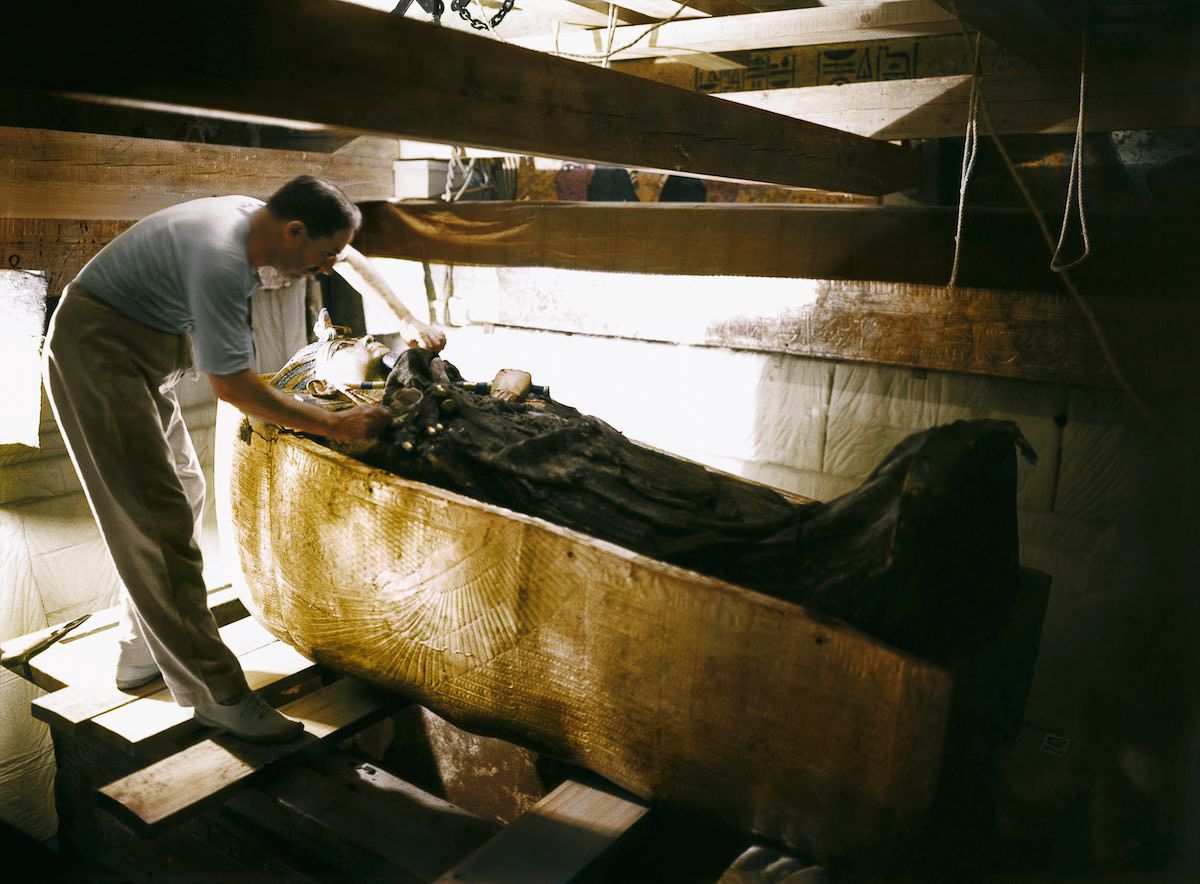
October 1925, Tutankhamun’s Tomb | Howard Carter working on the lid of the second (middle) coffin, still nestled within the case of the first (outermost) coffin in the Burial Chamber. (©️ Griffith Institute, University of Oxford, colorized by Dynamichrome)
between the first (outermost) and second shrines.
and boxes containing joints of meat (Carter nos.
62a to 62vv) piled up against the west wall of the Antechamber.
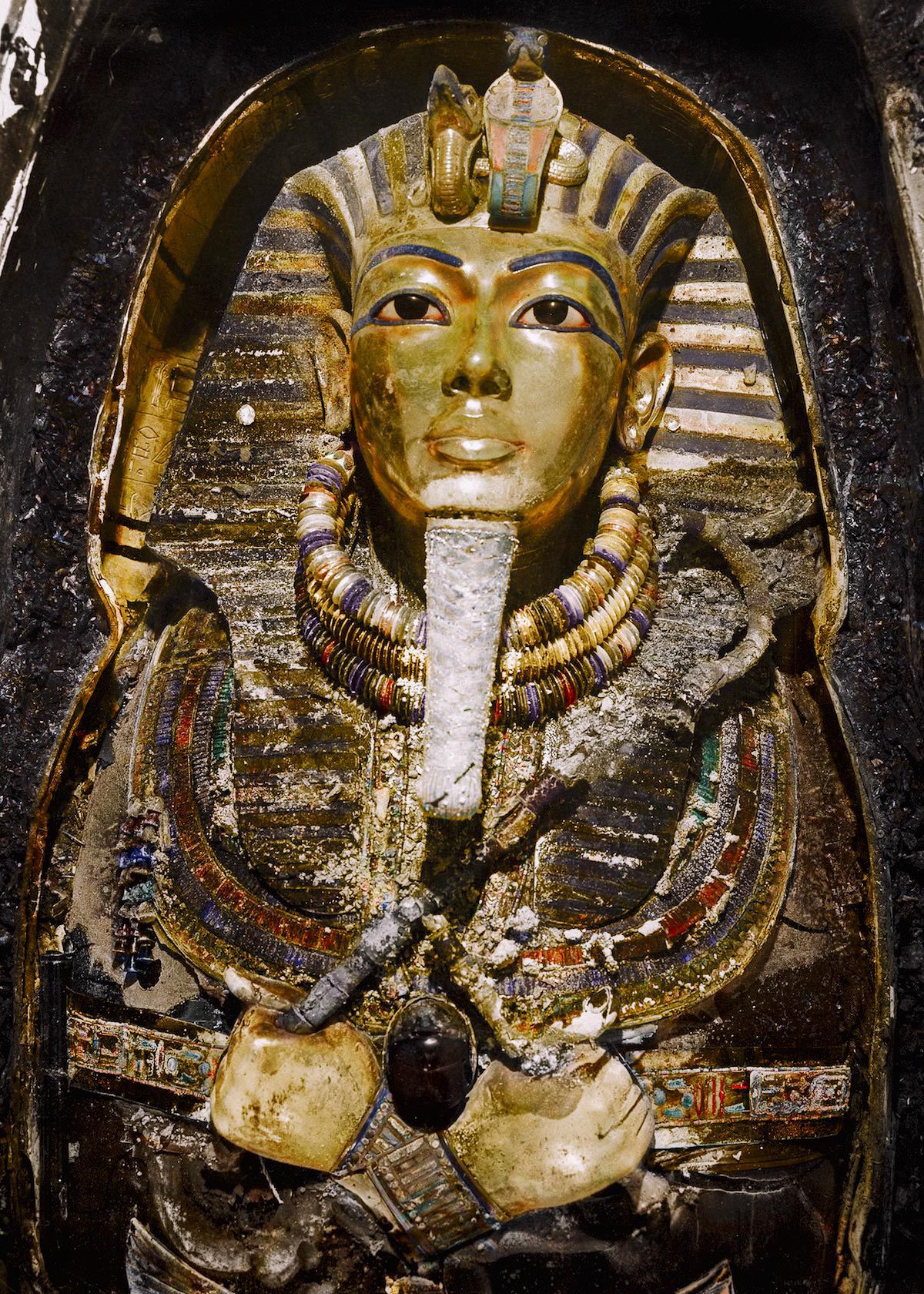
29th/30th October 1925, Tutankhamun’s Tomb | The gold mask (Carter no. 256a) in situ on the mummy of the King, still inside the third (innermost) solid gold coffin. (©️ Griffith Institute, University of Oxford, colorized by Dynamichrome)
267, 269 and 270).
Amongst other items these contained earrings, sandals and a wax model of a heron.
284 to 287), stacked against the southern wall of the Treasury.
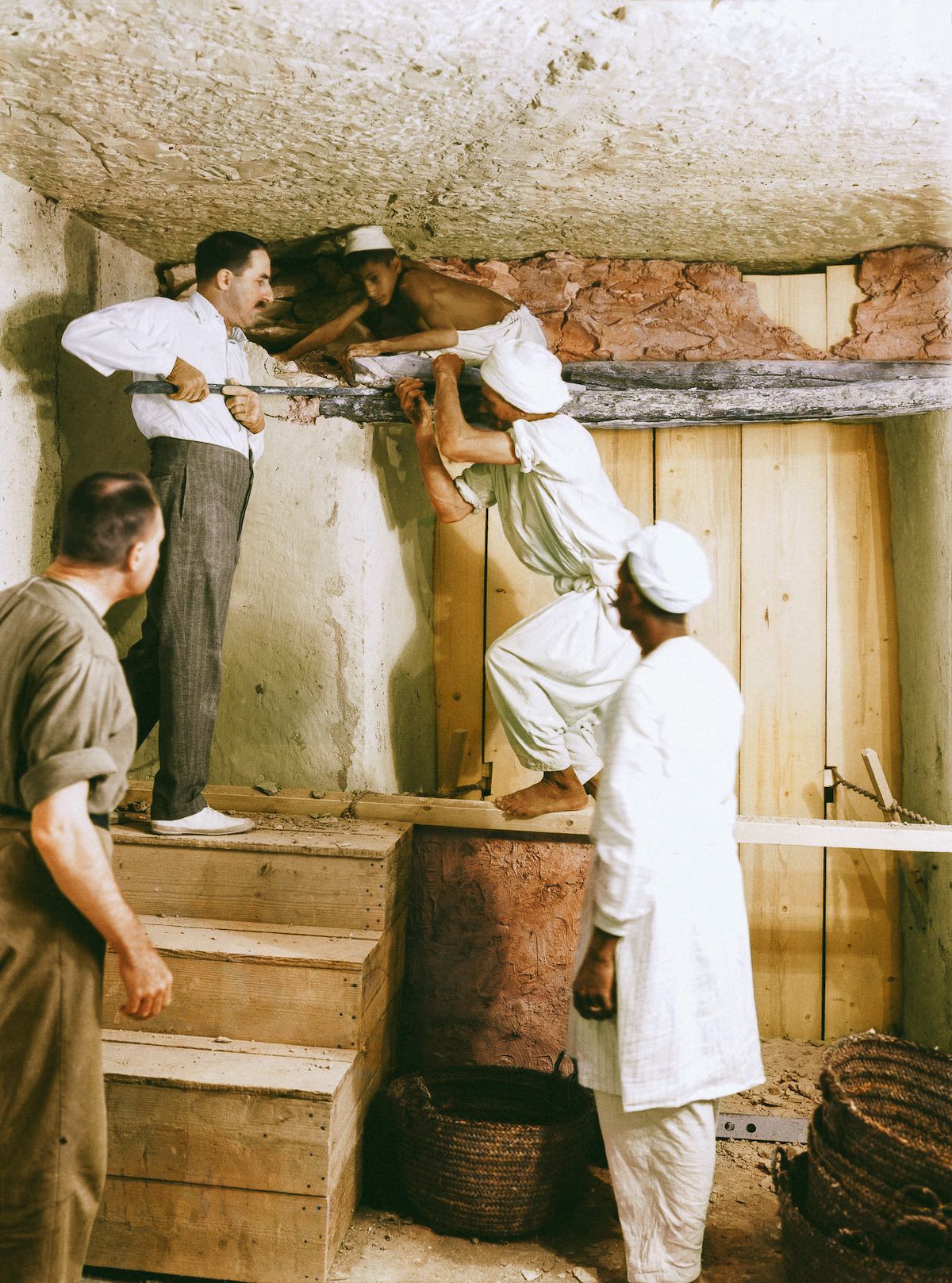
2nd December 1923, Tutankhamun’s Tomb | Howard Carter (at the top of the stairs), Arthur Callender and Egyptian workmen removing the wall between the Antechamber and the Burial Chamber to enable the dismantling of the four golden shrines enclosing the sarcophagus. (©️ Griffith Institute, University of Oxford, colorized by Dynamichrome)
50), in front of the lion couch (Carter no.
- against the west wall of the Antechamber included an ivory and ebony chest (Carter no.
32), black shrine-shaped boxes' (Carter nos.
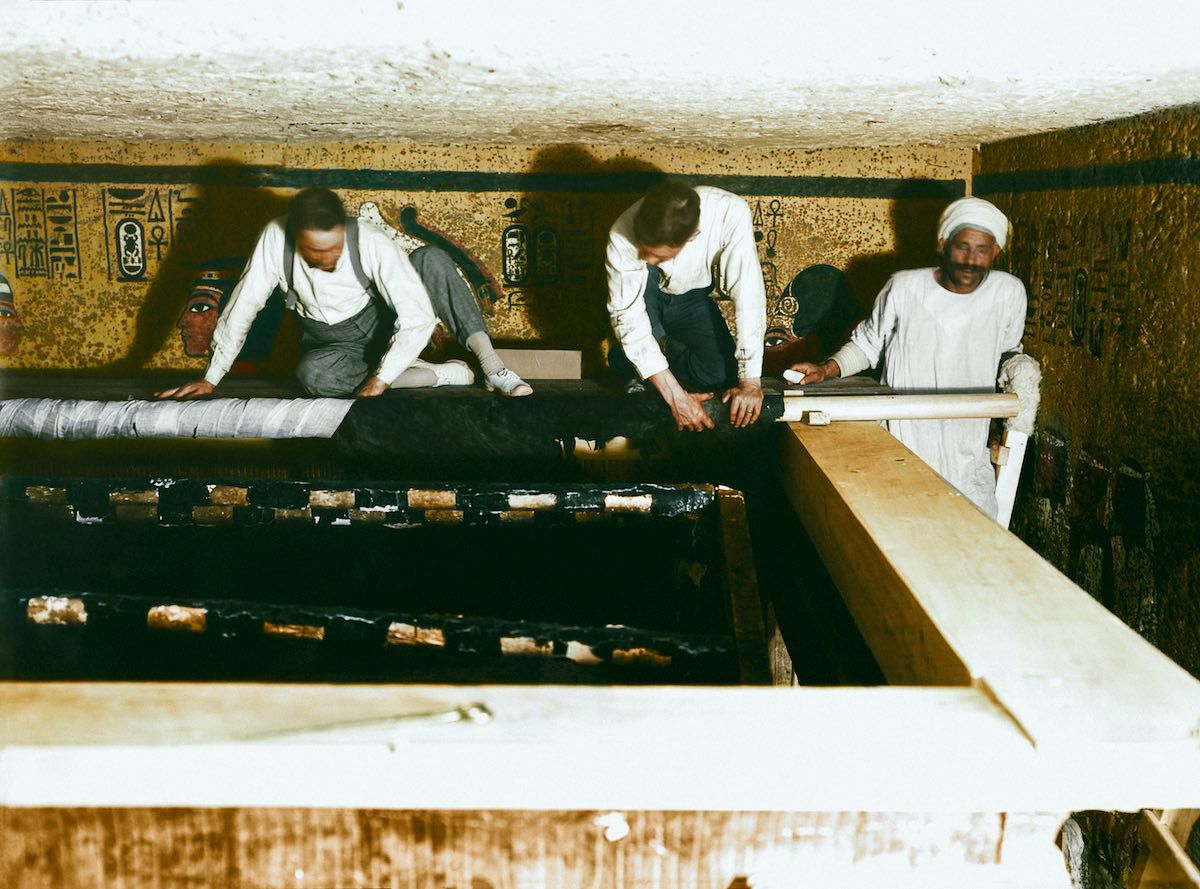
30th December 1923, Tutankhamun’s Tomb | Howard Carter (left), Arthur Mace and an Egyptian workman standing on scaffolding, roll back the linen pall (Carter no. 209) which lay over a gilded, wooden frame (Carter no. 208) between the first (outermost) and second shrines. (©️ Griffith Institute, University of Oxford, colorized by Dynamichrome)
37 and 38) and a child’s chair made of ebony (Carter no.
These statues had been placed either side of the sealed entrance to the Burial Chamber.
- found in the Antechamber.
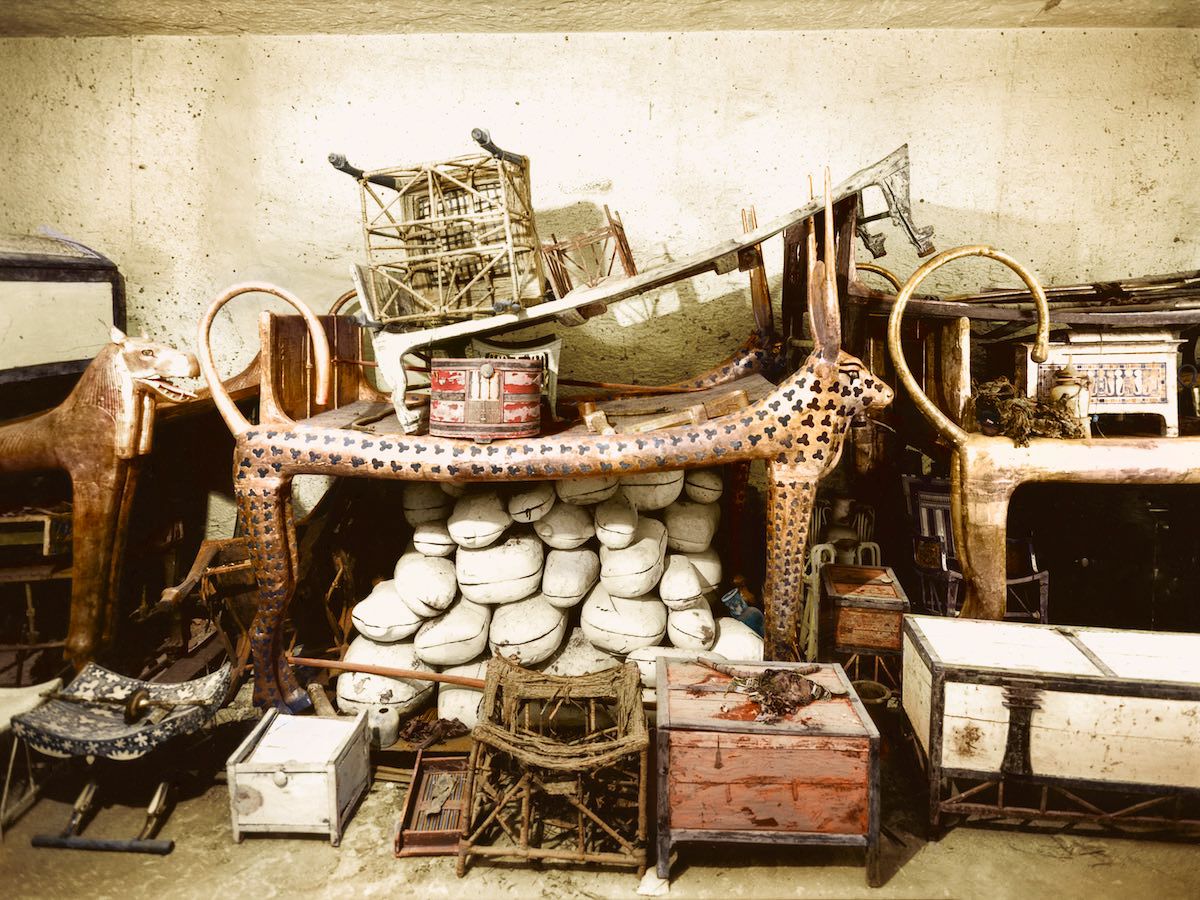
December 1922, Tutankhamun’s Tomb | Objects, including the cow-headed couch (Carter no. 73) and boxes containing joints of meat (Carter nos. 62a to 62vv) piled up against the west wall of the Antechamber. (©️ Griffith Institute, University of Oxford, colorized by Dynamichrome)
October 1926, Tutankhamun’s Tomb | The Anubis shrine (Carter no.
- on the threshold of the Treasury viewed from the Burial Chamber.
The figure ofAnubiswas covered with a linen shirt inscribed with the cartouche of Akhenaten.
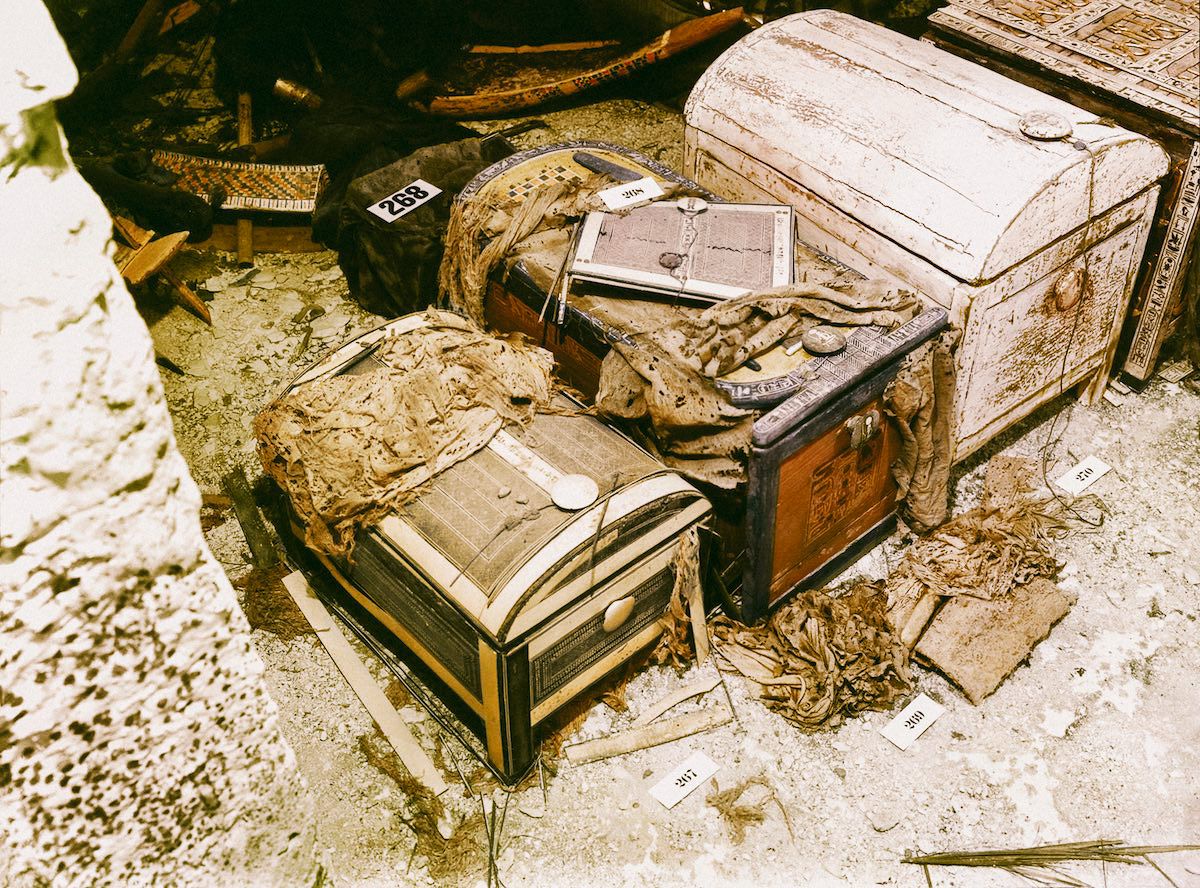
October 1926, Tutankhamun’s Tomb | Three wooden chests (the middle one in the shape of a cartouche) on the floor of the Treasury (Carter nos. 267, 269 and 270). Amongst other items these contained earrings, sandals and a wax model of a heron. (©️ Griffith Institute, University of Oxford, colorized by Dynamichrome)
inside the walls of the first (outermost) golden shrine (Carter no.
in the north west corner of the Burial Chamber.
( Griffith Institute, University of Oxford, colorized by Dynamichrome)
Related Articles:
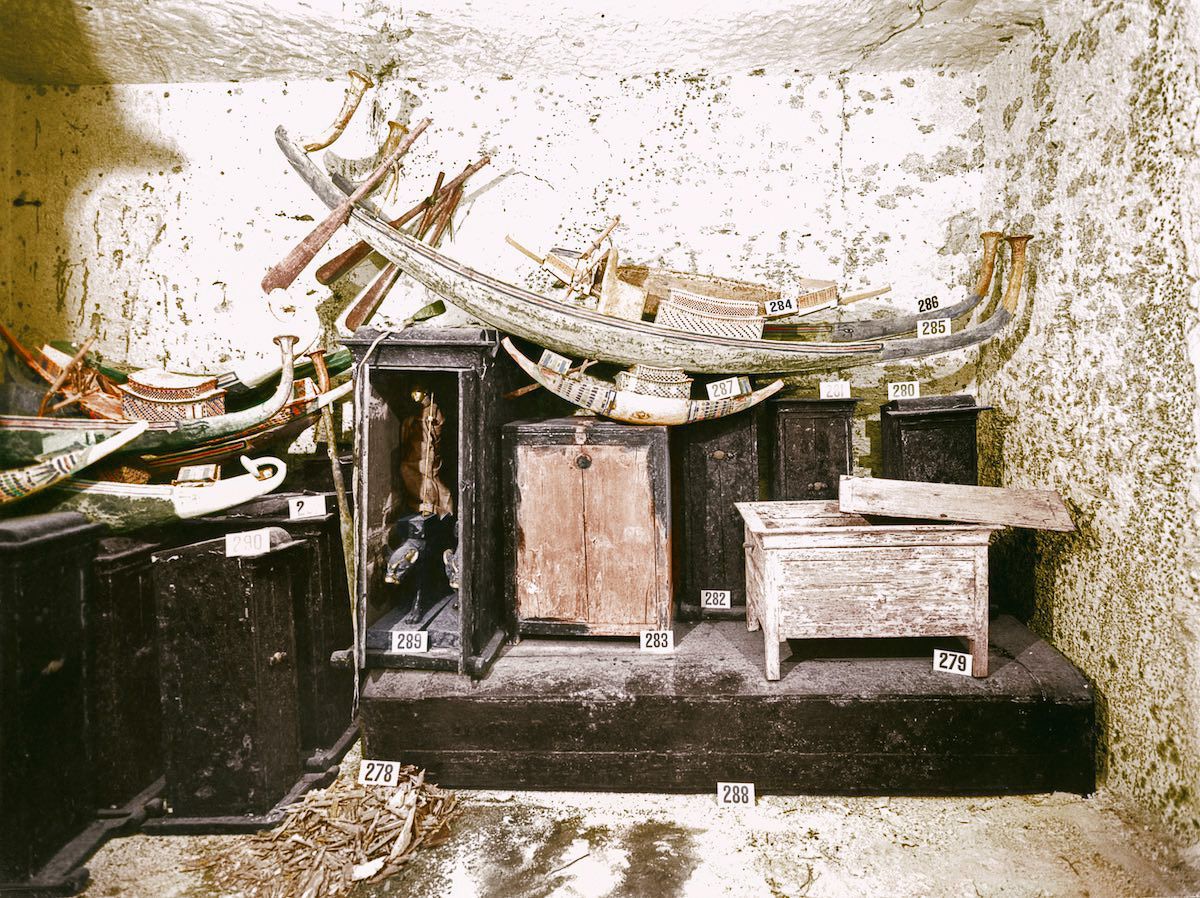
November 1926, Tutankhamun’s Tomb | Objects, including numerous model boats (Carter nos. 284 to 287), stacked against the southern wall of the Treasury. (©️ Griffith Institute, University of Oxford, colorized by Dynamichrome)
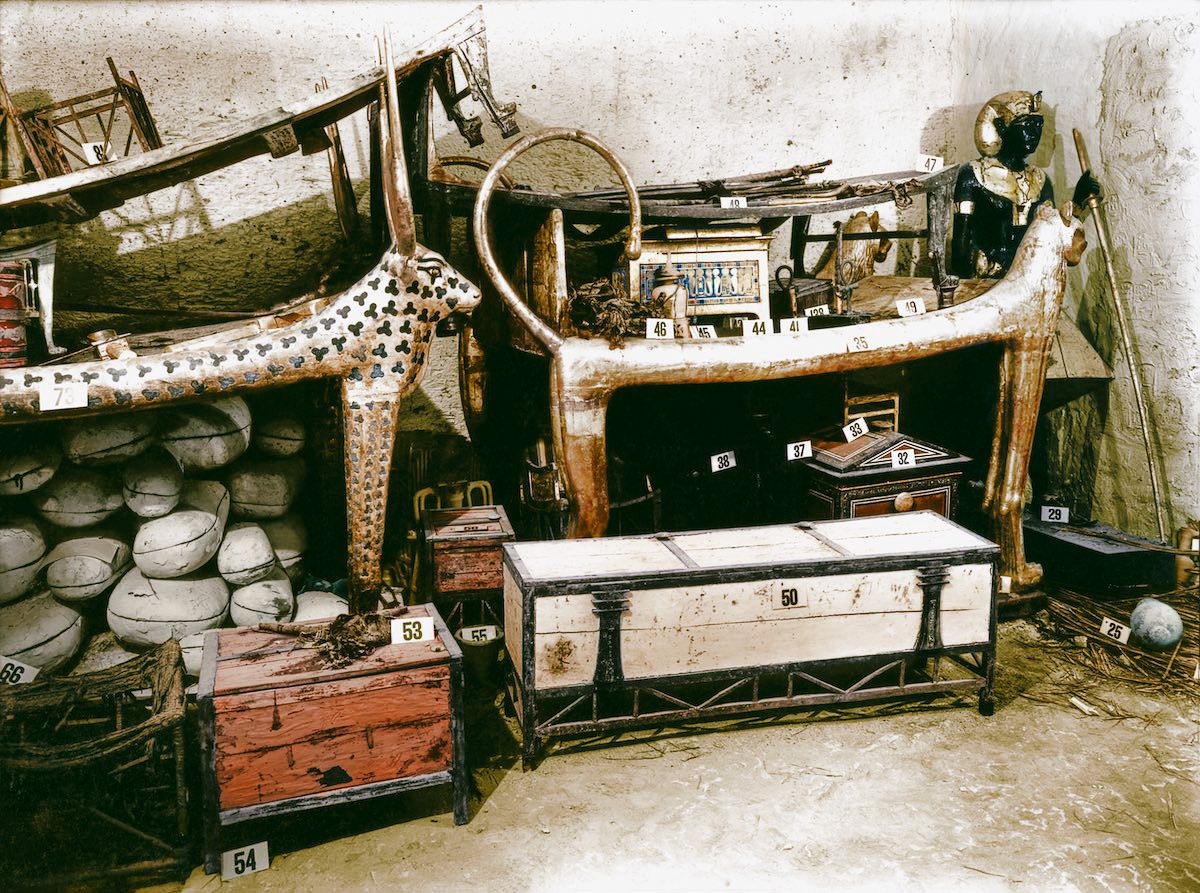
December 1922, Tutankhamun’s Tomb | The rectangular white box (Carter no. 50), in front of the lion couch (Carter no. 35) in the Antechamber, contained, amongst other items, linen garments (shirts, shawls and loin cloths), 18 sticks, 69 arrows and a trumpet. (©️ Griffith Institute, University of Oxford, colorized by Dynamichrome)
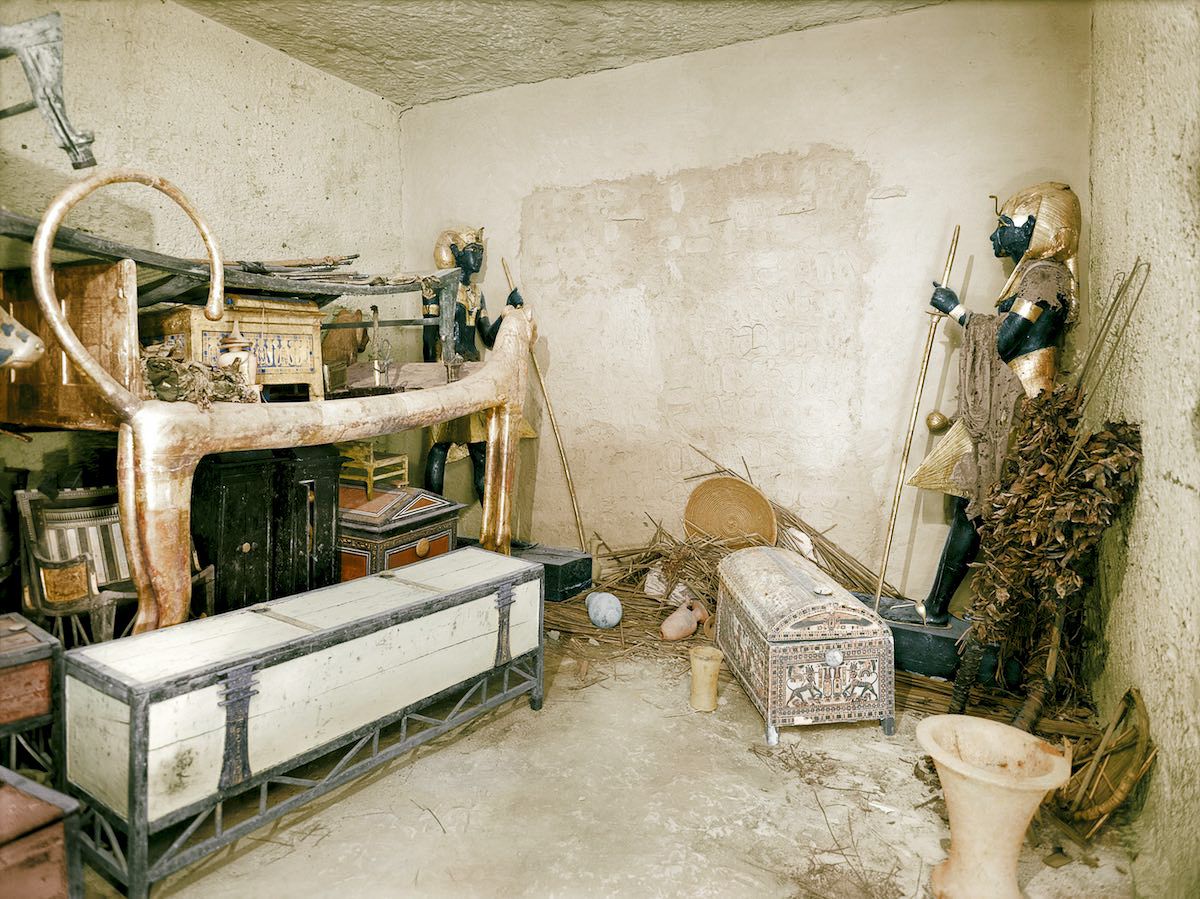
December 1922, Tutankhamun’s Tomb | View of the northern wall of the Antechamber showing the sentinel statues. (©️ Griffith Institute, University of Oxford, colorized by Dynamichrome)
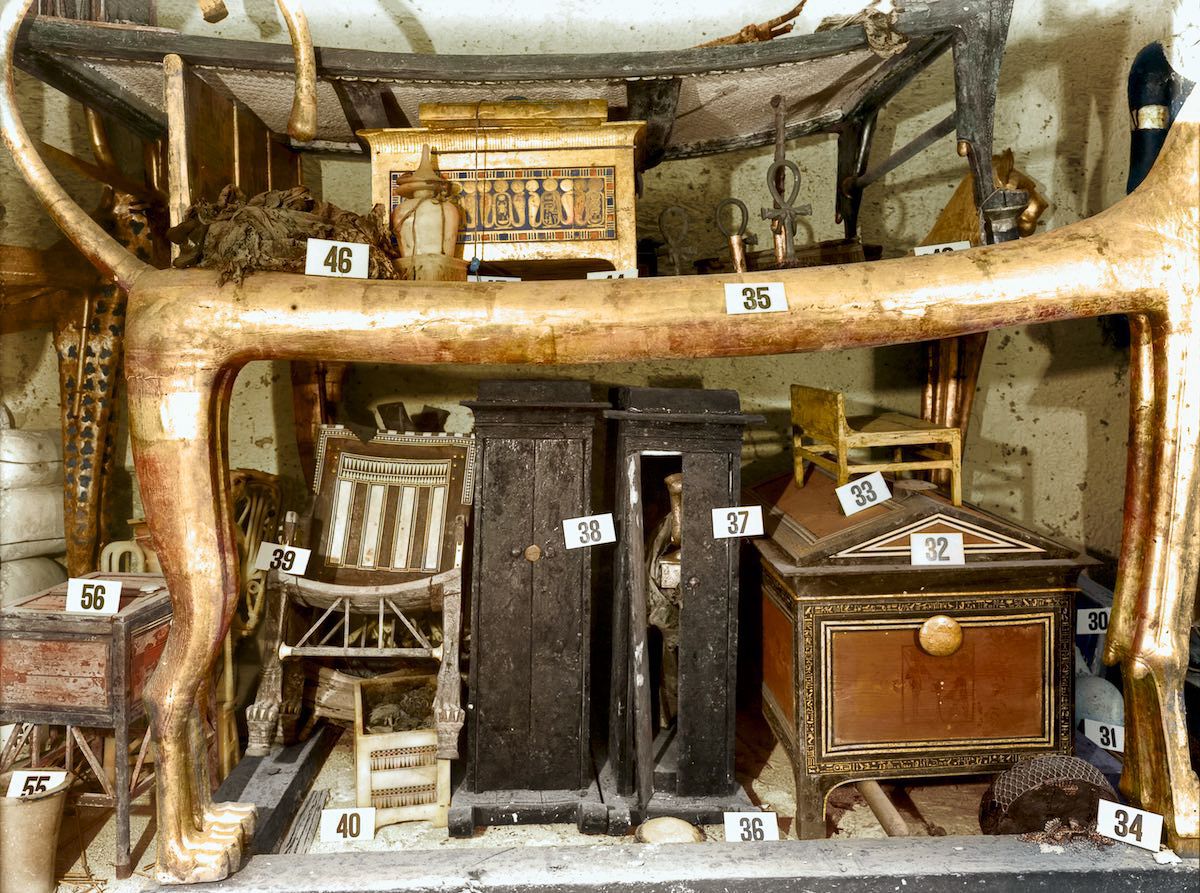
December 1922, Tutankhamun’s Tomb | Objects stacked under the lion couch (Carter no. 35) against the west wall of the Antechamber included an ivory and ebony chest (Carter no. 32), black ‘shrine-shaped boxes' (Carter nos. 37 and 38) and a child’s chair made of ebony (Carter no. 39). (©️ Griffith Institute, University of Oxford, colorized by Dynamichrome)
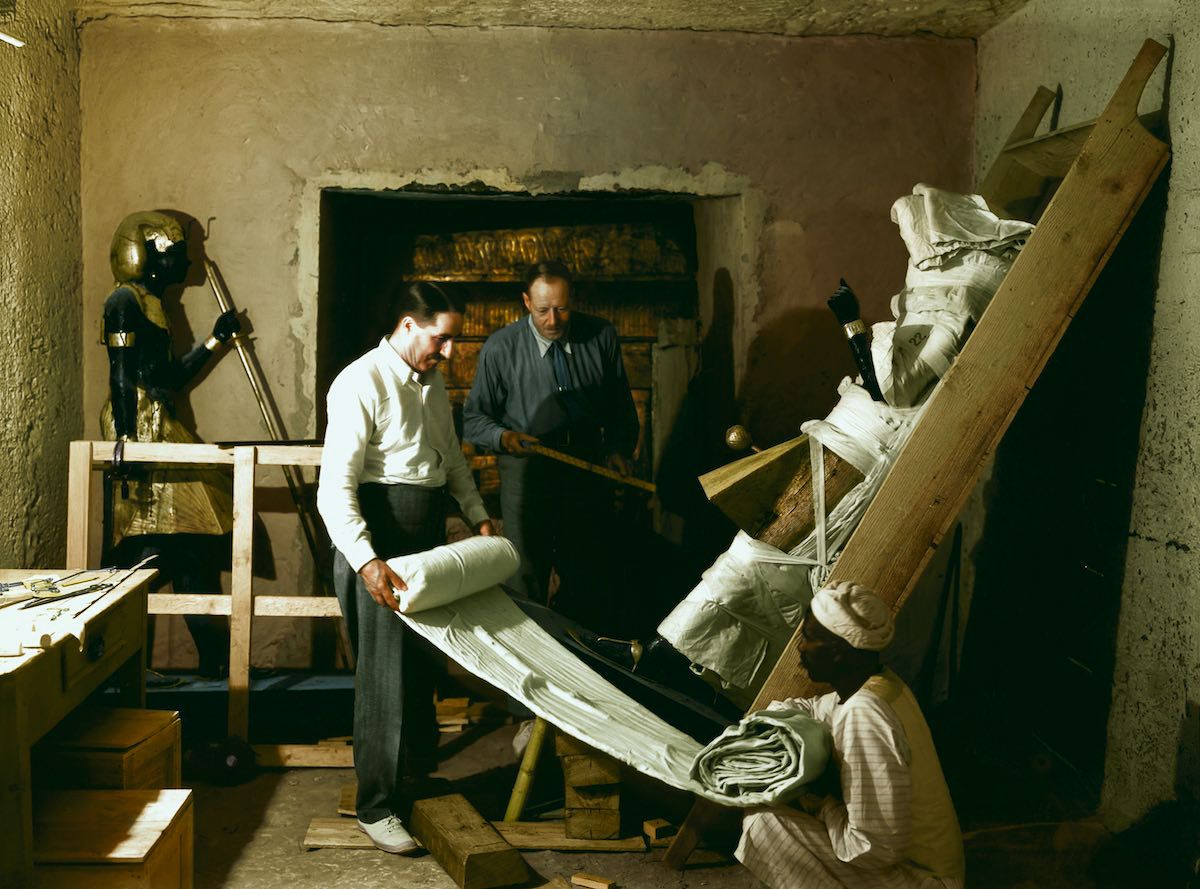
29th November 1923, Tutankhamun’s Tomb | Howard Carter (on the left) working with his friend and colleague Arthur Callender on wrapping one of two sentinel statues of Tutankhamun (Carter no. 22) found in the Antechamber, before their removal to the ‘laboratory' set up in the tomb of Sethos II (KV 15). These statues had been placed either side of the sealed entrance to the Burial Chamber. (©️ Griffith Institute, University of Oxford, colorized by Dynamichrome)
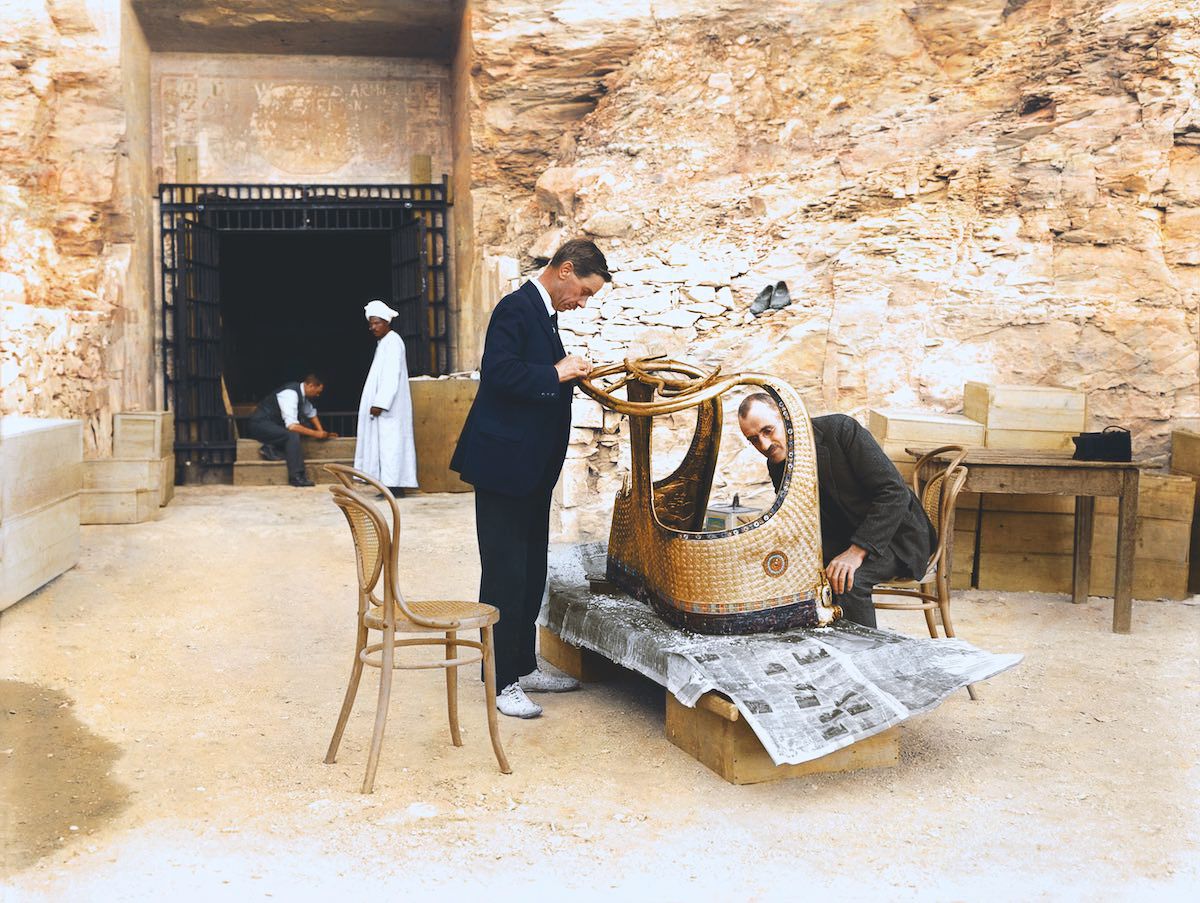
November/December 1923, Sethos II’s Tomb (‘laboratory') | Arthur Mace (left) and Alfred Lucas working outside the ‘laboratory' set up in the tomb of Sethos II (KV 15), stabilizing the surface of one of the state chariots (Carter no. 120) found in the Antechamber.(©️ Griffith Institute, University of Oxford, colorized by Dynamichrome)
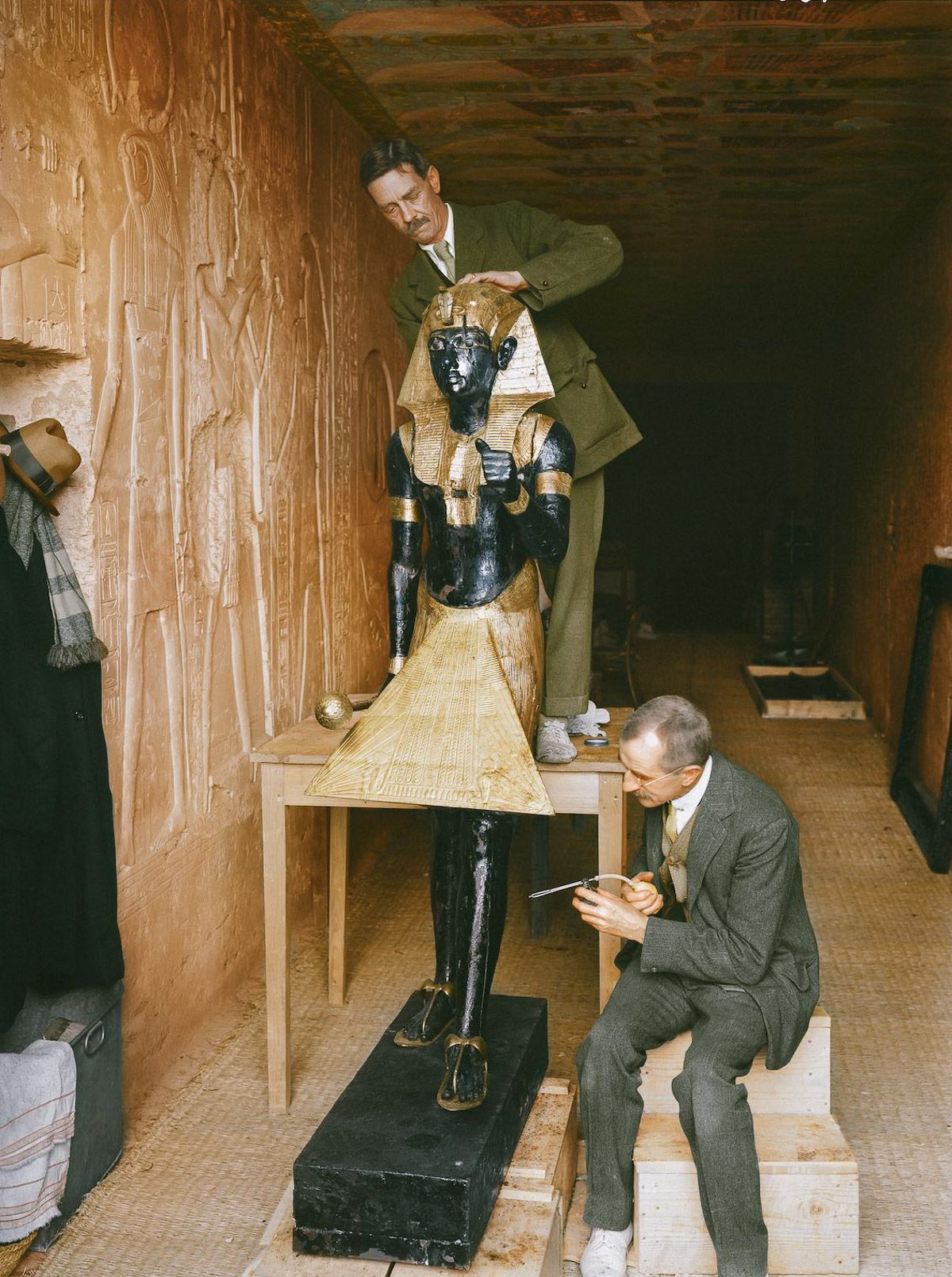
January 1924, Sethos II’s Tomb (‘laboratory') | Arthur Mace (standing) and Alfred Lucas (sitting) working inside the makeshift ‘laboratory' (set up in KV 15, the tomb of Sethos II) on the conservation of one of the two sentinel statues from the Antechamber (Carter no. 22). The statue shows the King wearing the nemes headdress, kilt and sandals, and carrying a mace and a staff. (©️ Griffith Institute, University of Oxford, colorized by Dynamichrome)

December 1923, Tutankhamun’s Tomb | Howard Carter (center), Arthur Callender and two Egyptian workmen lifting one roof section from the first, outermost shrine (Carter no. 207). With its double sloping roof, the shape of this shrine resembles that of a ‘sed festival pavilion'; it was made of from twenty separate oak sections, held together by a variety of different joints. (©️ Griffith Institute, University of Oxford, colorized by Dynamichrome)
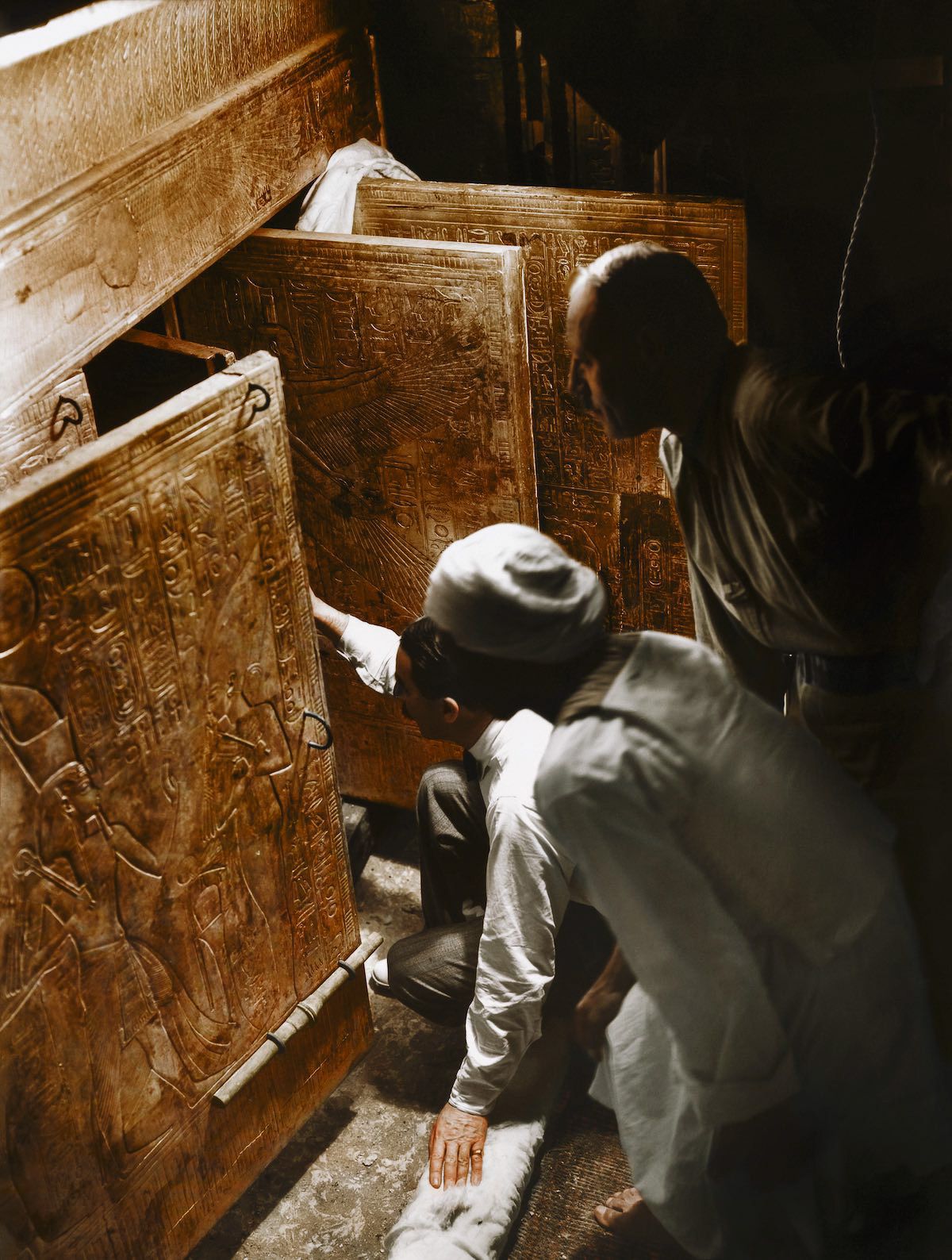
4th January 1923, Tutankhamun’s Tomb | Howard Carter (kneeling), Arthur Callender and an Egyptian workman in the Burial Chamber, looking through the open doors of the four gilded shrines towards the quartzite sarcophagus. (©️ Griffith Institute, University of Oxford, colorized by Dynamichrome)
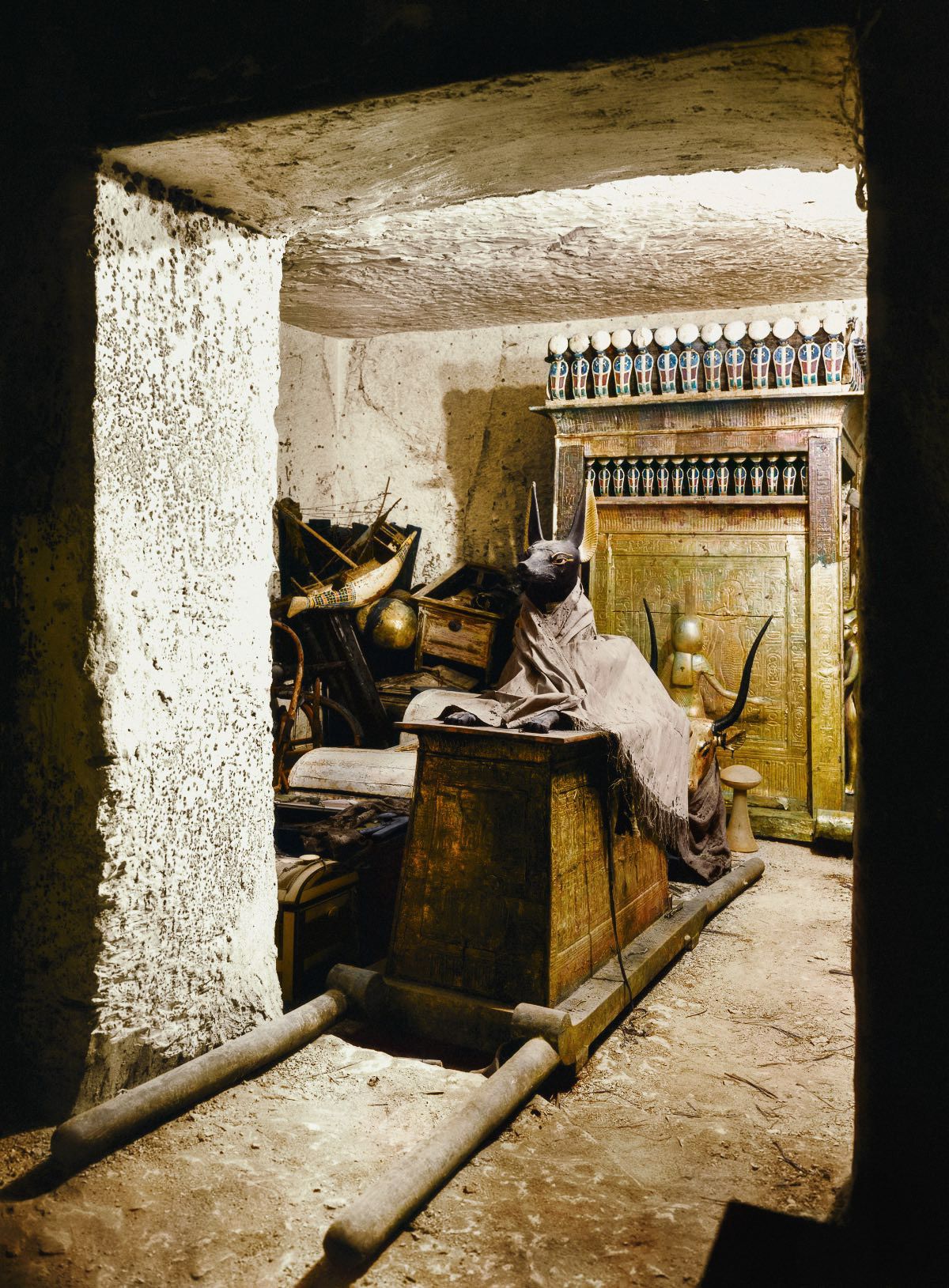
October 1926, Tutankhamun’s Tomb | The Anubis shrine (Carter no. 261) on the threshold of the Treasury viewed from the Burial Chamber. The figure ofAnubiswas covered with a linen shirt inscribed with the cartouche of Akhenaten. (©️ Griffith Institute, University of Oxford, colorized by Dynamichrome)
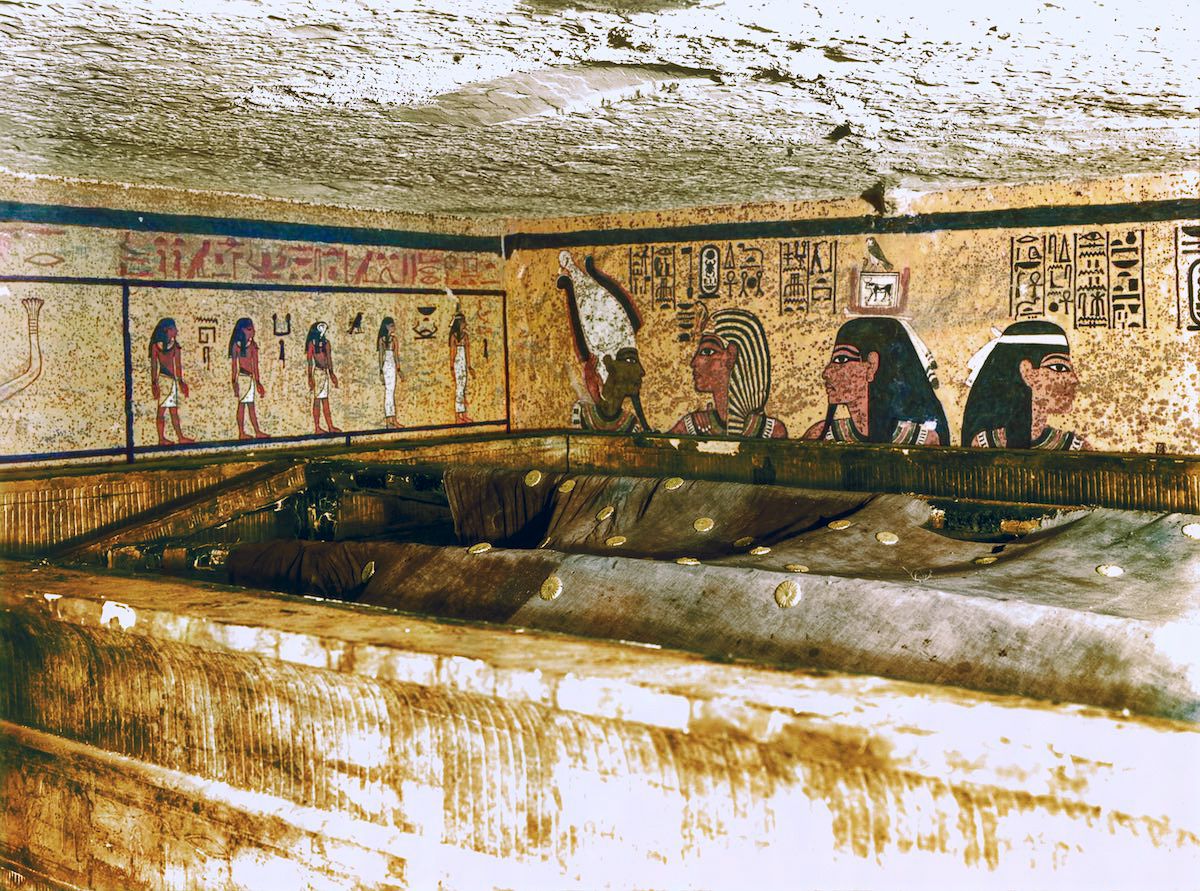
December 1923, Tutankhamun’s Tomb | The linen pall, decorated with bronze ‘rosettes' (Carter no. 209) inside the walls of the first (outermost) golden shrine (Carter no. 207) in the north west corner of the Burial Chamber. (©️ Griffith Institute, University of Oxford, colorized by Dynamichrome)
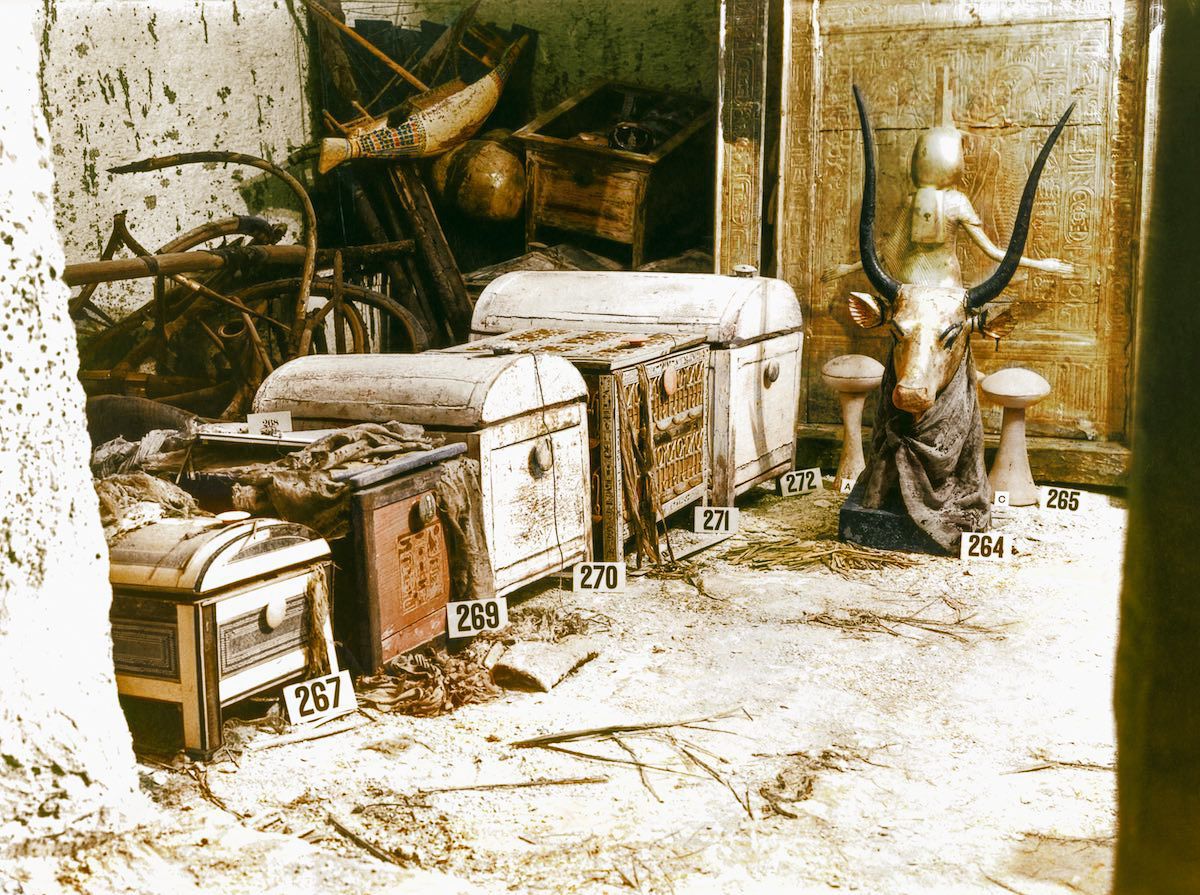
October 1926, Tutankhamun’s Tomb | A line of chests down the center of the Treasury, ending with the canopic chest (Carter no. 266) which housed the king’s linen-wrapped stomach, intestines, liver and lungs in miniature gold coffins, inside an alabaster canopic box. (©️ Griffith Institute, University of Oxford, colorized by Dynamichrome)